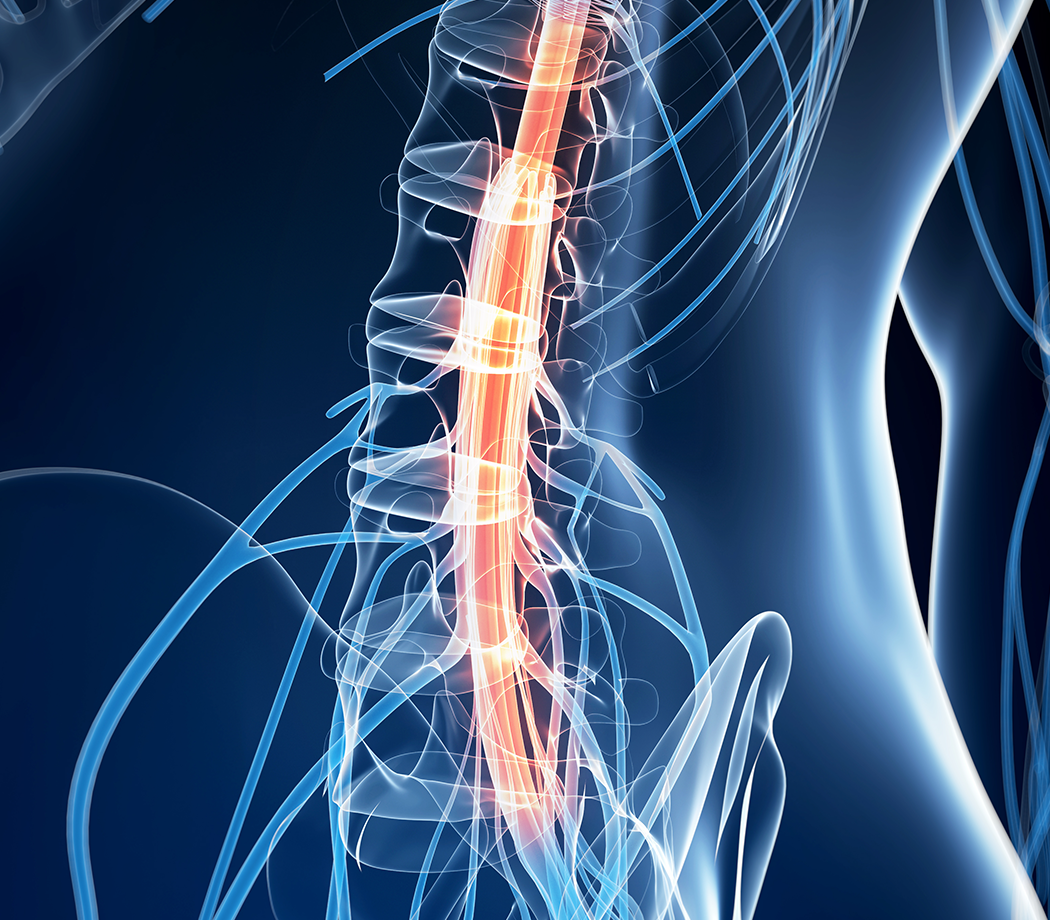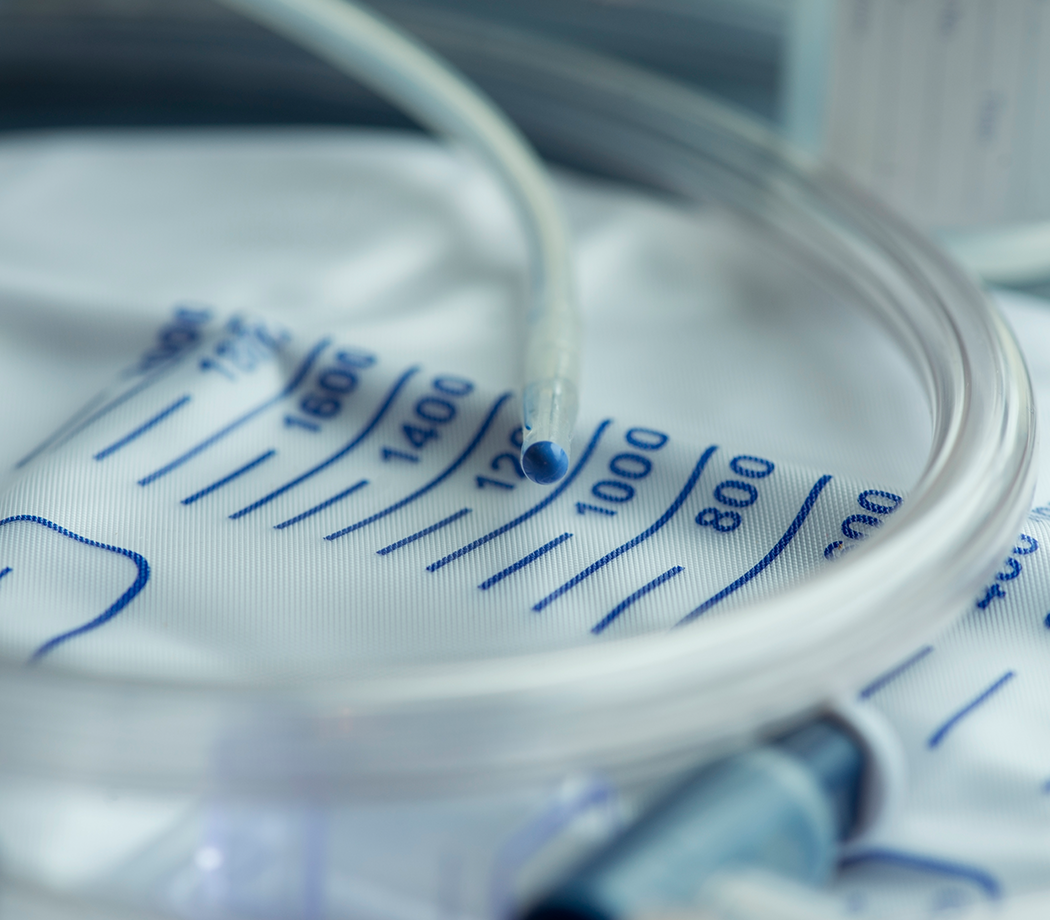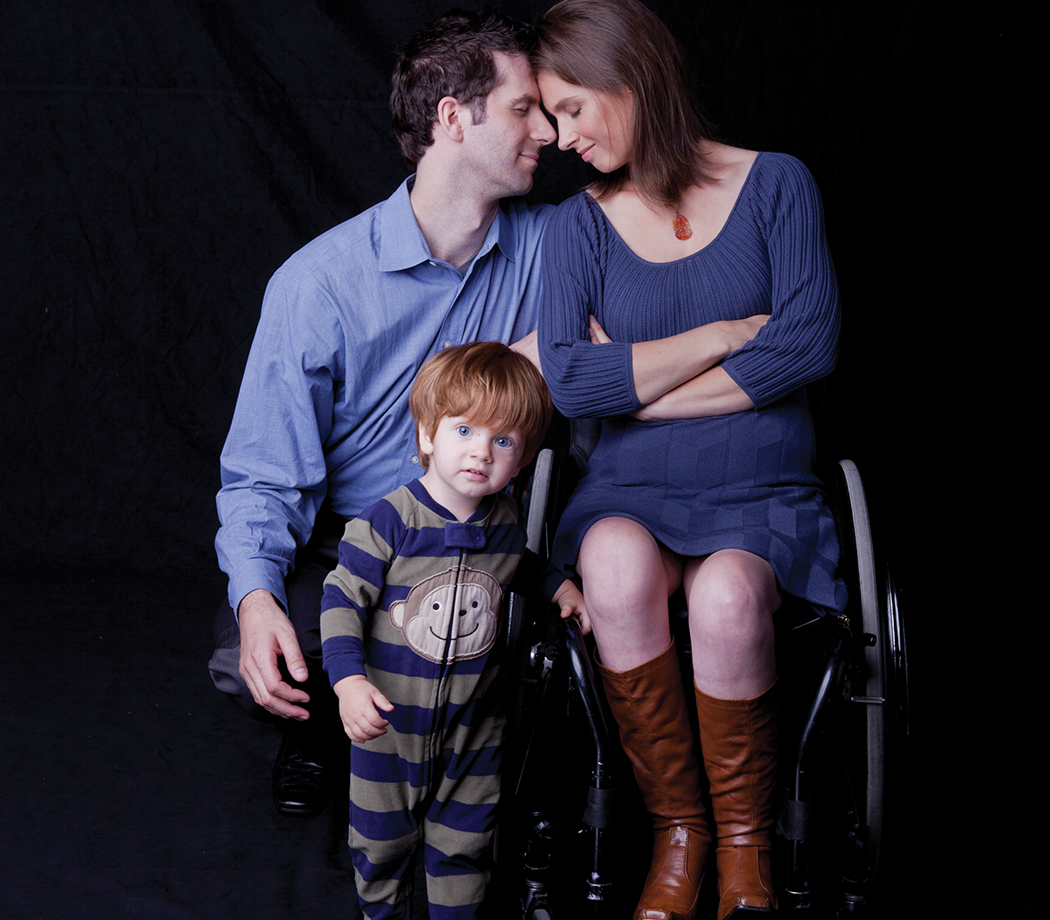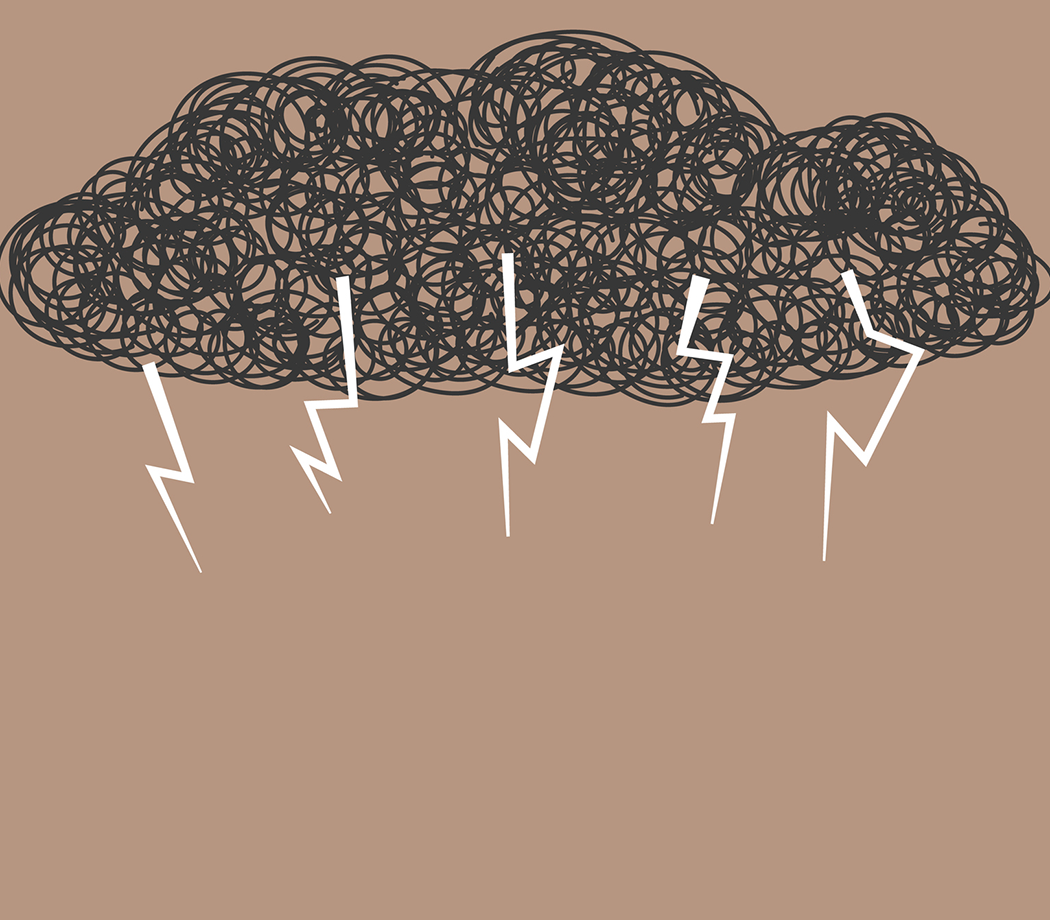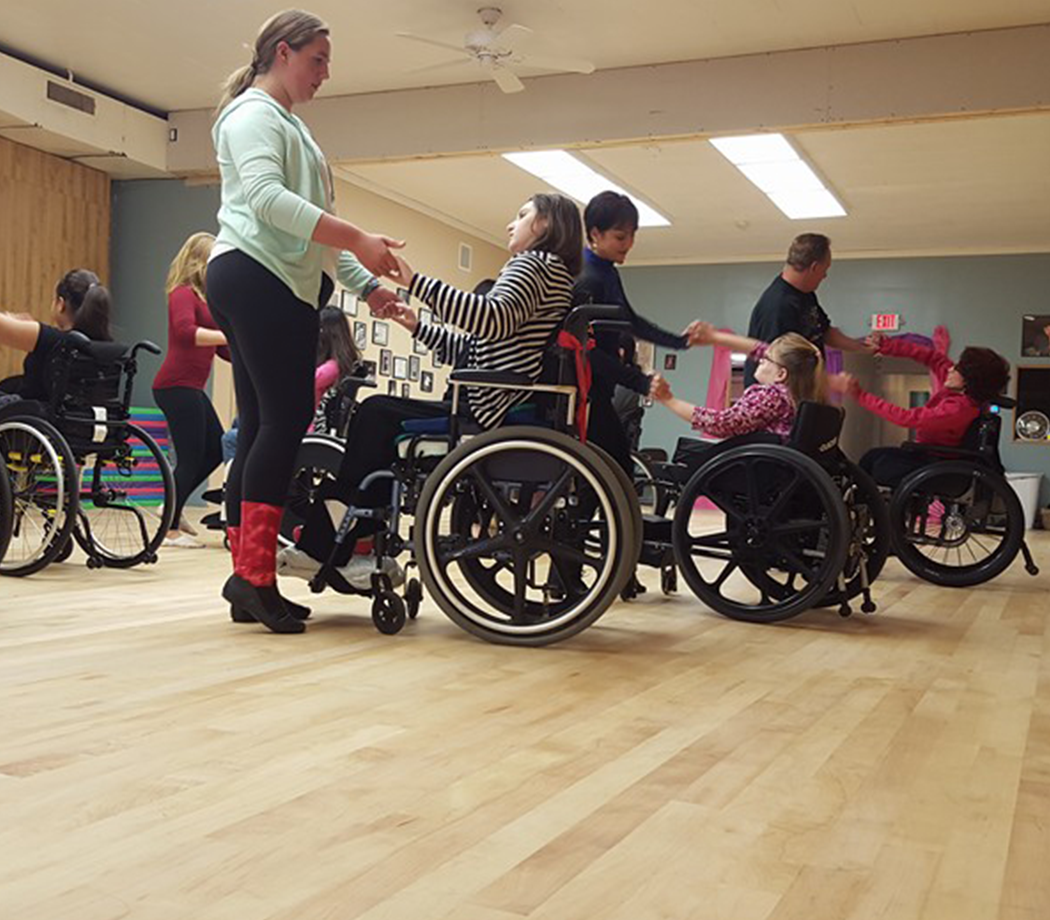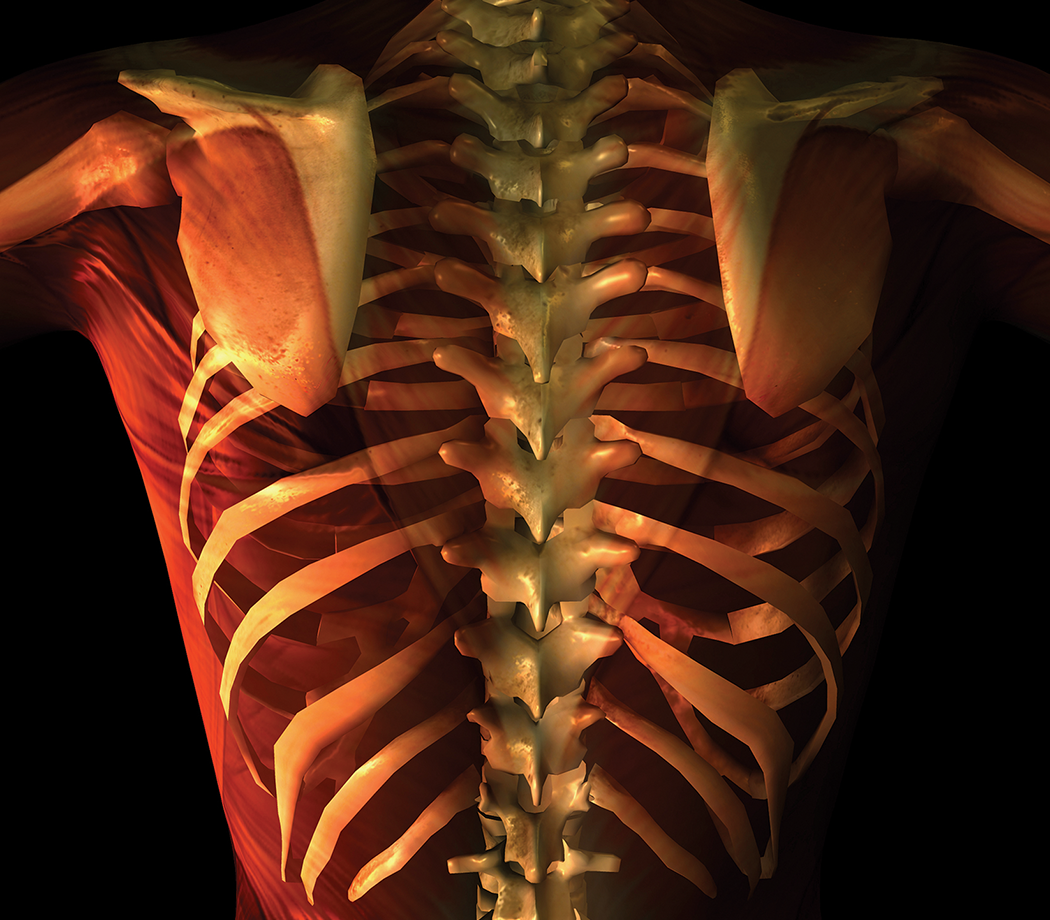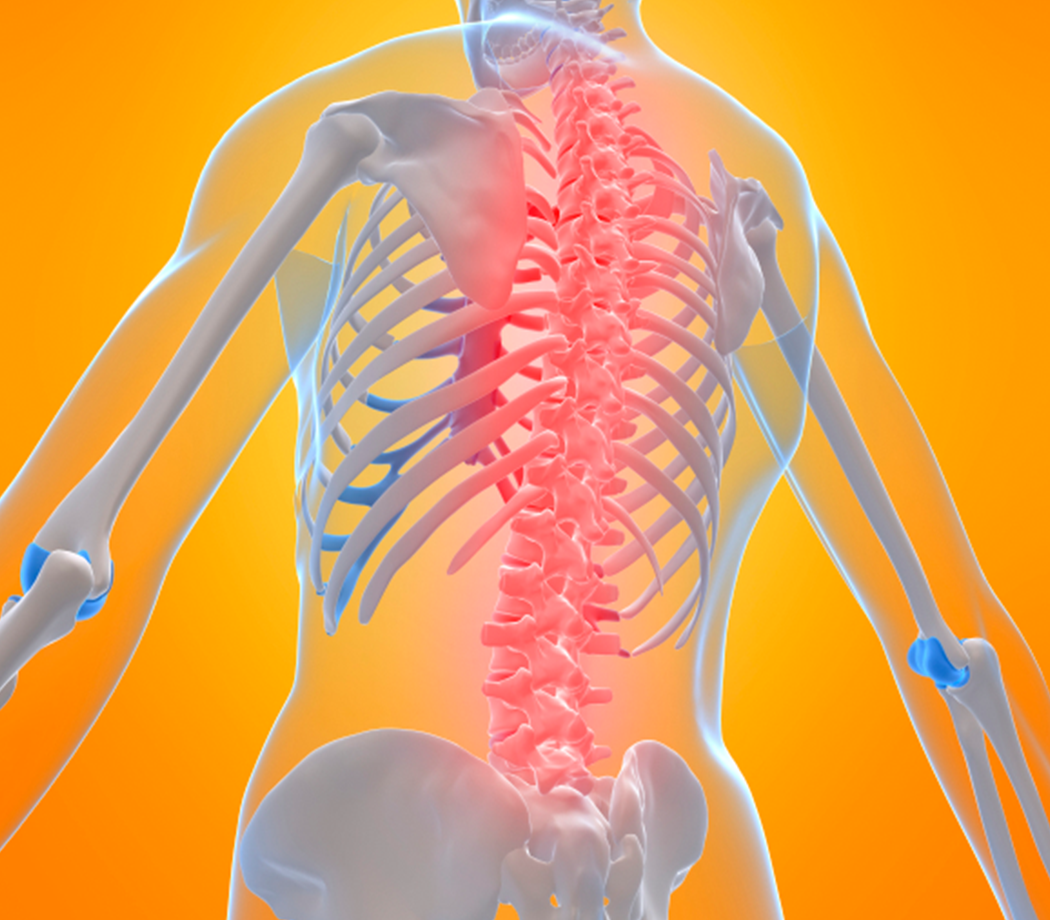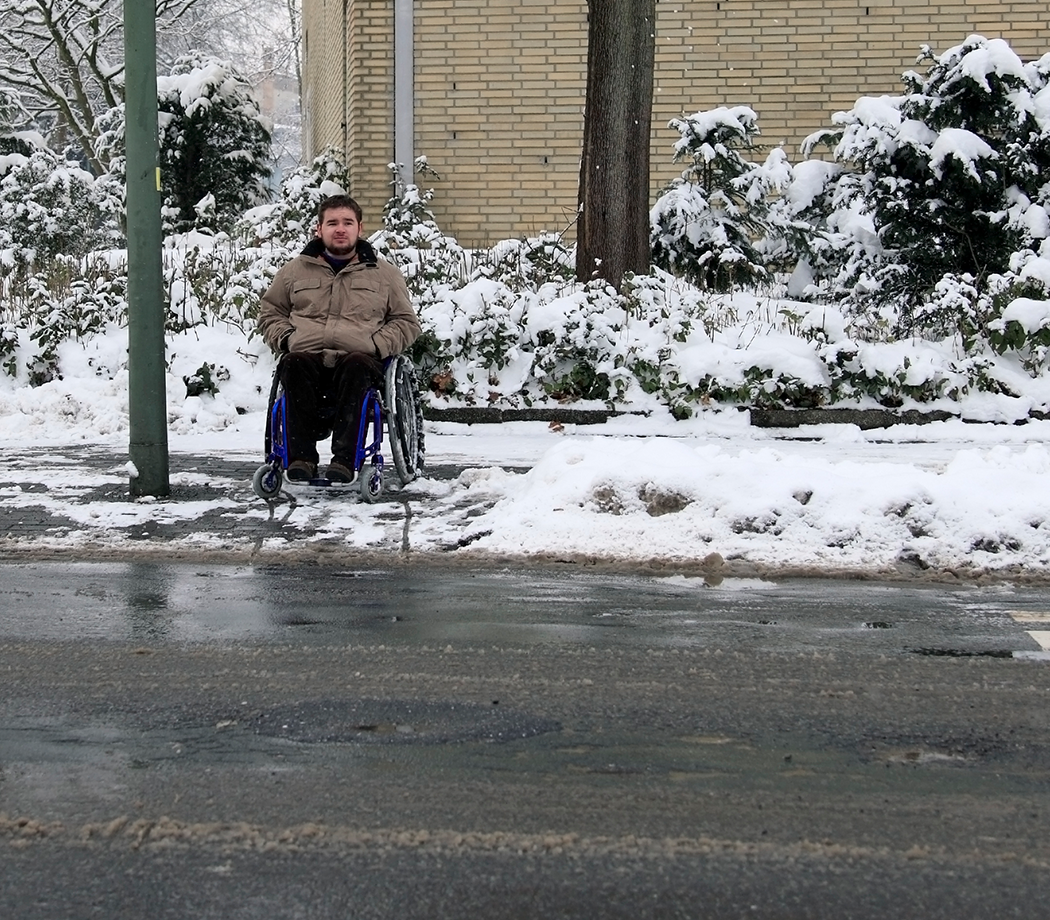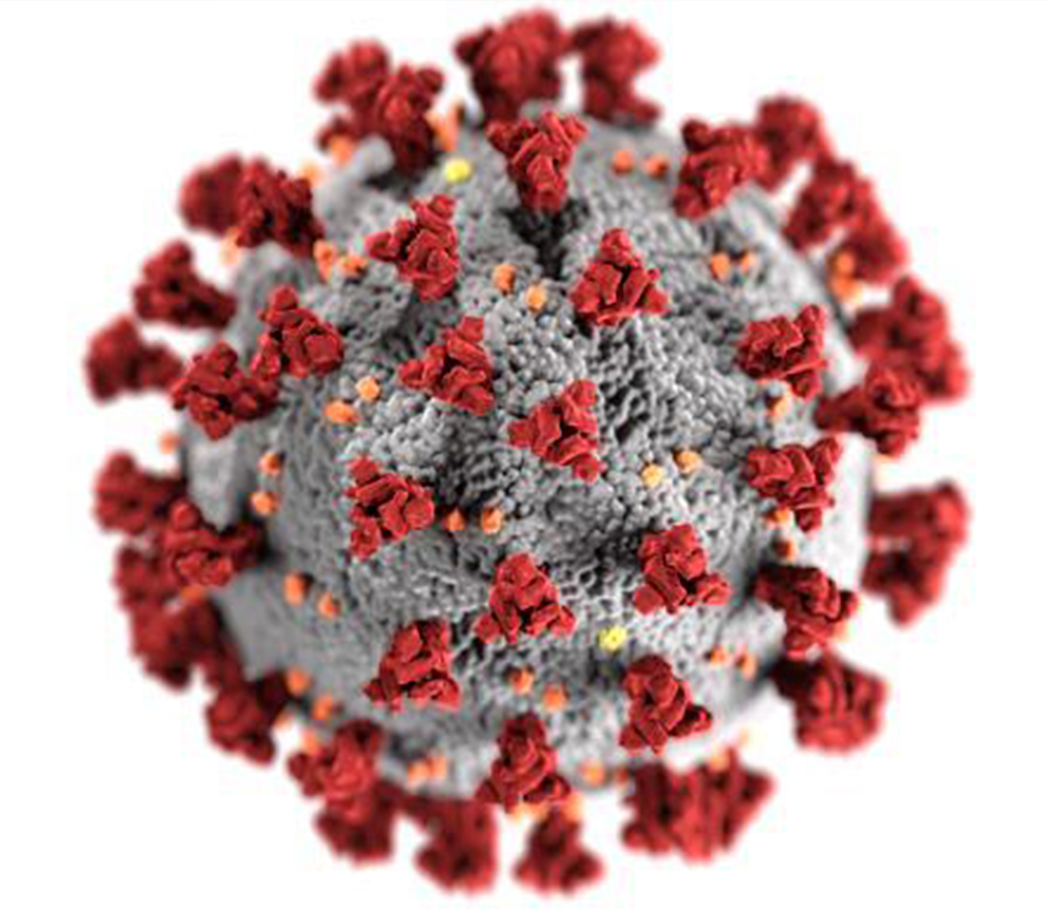Spinal Cord Glossary
Common Terms Associated with Paralysis
This glossary is designed to help you as you learn more about paralysis and navigate some of the terms used by medical professionals and researchers.
You may want to bookmark this page for easy reference. If you have any questions or need additional information, reach out to our Information Specialists.
A
4-aminopyridine (4-AP)
Drug that improves conduction of nerve impulses in some people, leading to functional gains and reduced spasticity; may cause seizures, convulsions or dizziness.
abdominal binder
Wide elastic binder used to help prevent hypotension (drop in blood pressure). It is also used for cosmetic purposes, e.g., holding in the abdomen.
actin
Filamentous protein that is a key component of the framework of a cell.
activity dependent plasticity
Theory that physical activity triggers nervous system recovery.
acute
The early stages of an injury (as opposed to chronic, which is longterm); in spinal cord injury, better early management of acute trauma may be the reason for an increased number of “incomplete” injuries. Theoretically, early intervention with drugs or cooling will limit functional loss. If the progressive cascade of secondary effects of trauma at the cellular level (e.g., blood flow loss, swelling, calcium toxicity) can be reduced, the severity of the injury will be reduced.
allodynia
Disorder in which sensations that normally do not hurt become painful.
ambulation
A walking motion, often aided by braces and/or crutches. Using functional electrical stimulation (FES) to fire their leg muscles, people with paralysis can ambulate short distances.
Amyotrophic lateral sclerosis (ALS)
Disorder involving the loss of use of muscles. The nerves controlling these muscles are destroyed. Also known as Lou Gehrig’s disease.
analgesic
Class of drug that relieves pain without causing loss of consciousness.
ankylosis
Loss of mobility in a joint caused by bony calcium deposits.
anoxia
State of almost no oxygen delivery to a cell, resulting in low energy production and possible death of the cell.
antegrade continence enema
Facilitates movement of bowel by introducing an enema above the rectum by way of a stoma (opening) in the abdomen.
anticholinergic
Type of drug prescribed to reduce spasms of smooth muscle, especially the bladder.
anticoagulants
Drug therapy used to prevent the formation of blood clots that can become lodged in cerebral arteries and cause strokes.
antiplatelet agents
Type of anticoagulant drug therapy that prevents the formation of blood clots by preventing the accumulation of platelets that form the basis of blood clots; some common antiplatelets include aspirin and ticlopidine.
aphasia
Inability to understand or create speech, writing or language; generally due to damage to the speech centers of the brain.
apoptosis
Programmed cell death, or cell suicide, which is part of the natural life cycle of a cell. Apoptosis can be triggered by age, injury, or unknown factors. When the cell senses that it’s not healthy, it goes through a series of changes, finally chopping its DNA and proteins into small packets that are cleaned up by microglia.
arachnoiditis
Burning back pain caused by an inflamed arachnoid membrane (surrounding the spinal cord) due to disease or trauma, or to the injection of contrast dye for radiologic exams.
Arachnoid membrane
Middle of the three membranes that surround the spinal cord and brain.
Arteriovenous malformation (AVM)
Congenital disorder characterized by a complex tangled web of arteries and veins.
ASIA score
Measure of function after spinal cord injury; used by physicians. “A” means complete injury; “E” means complete recovery.
astrocytes
Cells that nourish and support spinal neurons.
ataxia
Problem of muscle coordination due not to weakness, rigidity, spasticity or sensory loss, but to uncoordinated movement.
atelectasis
The collapse of part or all of a lung by blockage of the air passages or shallow breathing.
atherosclerosis
Blood vessel disease characterized by deposits of lipid (fat) material on the inside of the walls of large- to medium-sized arteries that make the artery walls thick, hard, brittle and prone to breaking.
atrophy
Loss of bulk in a muscle, nerve or organ from less than normal usage or from previous damage.
autoimmune response
The body’s defense system against foreign substances turns on itself. Multiple sclerosis is believed to be an autoimmune disease.
autonomic dysreflexia
Potentially fatal complication of spinal cord injuries that involves episodes of extreme hypertension and sometimes leads to intracranial hemorrhage or stroke. It occurs in 90% of people with cervical or high thoracic cord injuries.
autonomic nervous system
Part of the nervous system responsible for regulating the activity of internal organs. It includes the sympathetic and parasympathetic nervous systems.
axon
Long tail of a neuron that transmits electrical impulses from the cell body.
axonal transport
Mechanism that enables neurons to send proteins and chemical messages back and forth along axons.
B
bacterial translocation
A process in which bacteria that normally live harmlessly in the gut cross through the intestinal tract and cause infections in other organs, like the lungs or kidneys.
biofeedback
Process that uses sensory information (sight or sound) about blood pressure, muscle tension and other body functions and then enables people to control these functions.
bipap
Bi-level positive airway pressure, a noninvasive means of assisted breathing using a mask, usually used to treat sleep apnea.
bladder augmentation
Surgical procedure using a portion of the intestine to expand bladder capacity in people who are incontinent; makes possible the use of intermittent catheterization.
blood-brain barrier
Elaborate network of supportive brain cells that surround blood vessels and protect neurons from the possibly toxic effects of direct exposure to blood.
Brown-Séquard syndrome
Incomplete spinal cord injury wherein half of the cord has been damaged. There is spastic paralysis on the same side as the lesion and loss of sensation on the opposite side of the lesion.
C
C. elegans
Caenorhabditis elegans is a small (1mm long) soil roundworm found in temperate regions. It is an ideal model organism to study because, from a molecular point of view, it shares many essential characteristics (i.e., genes) with humans.
Ca2+-permeable AMPA receptors
Receptors that act like gatekeepers. When activated by glutamate, they open channels in the cell membrane that permit calcium to enter. Excess glutamate from injured cells may cause the receptors of neighboring cells to admit toxic levels of calcium.
calcium channels
Tiny channels in the cell membrane that permit calcium to pass into or out of the cell. They also trigger intracellular actions, including the release of neurotransmitters, when the cells are stimulated by sensory or other input
catecholamines
Chemicals produced by organs that are controlled by the sympathetic nervous system. These substances are involved in the fight-or-flight response to stress.
case manager
Person on the rehab team who handles discharge plans, works with insurance carriers and helps with equipment and/or home modifications as needed.
catheter
Rubber or plastic tube inserted in the urethra to withdraw urine from the bladder.
cauda equina
Spinal roots descending from the tail bone area of the spinal cord.
cell adhesion molecules (CAMs)
Proteins that adhere to the surface of an elongating axon and direct it to its final address in the brain or spinal cord.
central cord syndrome
Trauma to the center part of the cord only; may affect arms but not leg movement.
central nervous system
The brain and spinal cord.
central pattern generator (CPG)
Network of spinal neurons that, when stimulated by neurotransmitters, cause the muscles of the legs to move in rhythmic stepping motions.
central stroke pain
Pain that is a mixture of sensations, which may include heat, and cold, burning, tingling, numbness, sharp stabbing and underlying aching pain.
cerebrospinal fluid (CSF)
Circulating clear fluid that bathes the brain and spinal cord, protecting them from shock.
cervical
High-level nervous structure of the spinal cord responsible for controlling the neck muscles, diaphragm, shoulders, wrists, triceps, and fingers.
chondroitin sulfate proteoglycans (CSPGs)
Molecules that are a major component of the scar that forms at the site of a spinal cord injury and that strongly inhibit axon regeneration. They may act on their own or, because of their large size and negative charge, may attract other growth inhibitors to the lesion – or both.
chondroitinase (cABC)
An enzyme that can chew up the bonds that hold CSPGs together, creating a more favorable environment for axon regeneration.
chronic
Condition that is continuous or persistent over an extended period of time; not easily or quickly resolved.
clonus
Involuntary movement of rapidly alternating contraction and relaxation of a muscle.
collateral sprouting – see nerve sprouting complement system.
Mechanism that amplifies the inflammatory response and produces molecules that either are toxic or recruit and activate other immune cells to produce toxins. More than thirty blood proteins comprise this system, which is activated by injured cells and tissues.
colostomy
A surgical procedure to facilitate emptying the bowel through the wall of the abdomen.
coma
Sleep-like state in which an injured person does not open his/her eyes, speak, or obey simple commands.
complete injury
Generally, a spinal cord injury that cuts off all sensory and motor function below the lesion site.
computed tomography (CT) scan
Series of X-rays of the brain and head; also called computerized axial tomography or CAT scan.
concussion
Reversible paralysis following brain trauma, usually involving loss of consciousness and/or a transient state of confusion.
congenital
A condition present at birth.
constraint-induced therapy
It restricts the use of a less affected extremity. Repetitive use of the more affected extremity improves function; has helped people with stroke and may be beneficial in CP, MS, and incomplete spinal cord injuries.
contracture
Joint that has stiffened to the point that it cannot be moved through its normal range.
contusion
Type of injury due to mechanical or physical force; similar to bruising in that tissue is not lacerated or transected.
CPAP
Short for continuous positive airway pressure, a means of noninvasive breathing assistance using a mask.
cortocospinal tract
Nerve circuit pathway that originates in the brain’s cerebral cortex and extends to lower levels of the cord, where descending axons send electrical impulses to the spinal motor neurons that, in turn, control the muscles.
Credé
Using the hands to push on the lower abdomen to express urine.
cyclic AMP
An intracellular signaling molecule
cyst
A cavity in the spinal cord that fills with fluid and can lead to loss of function, pain. Same as syrinx. See syringomyelia.
cystogram
X-ray of the bladder to show reflux (backward flow of urine back to the kidneys).
cystoscopy
Direct examination of the bladder using a cystoscope inserted in the urethra.
cytokines
Messenger molecules that enable immune cells to “talk” to one another and to other cells. Cytokines regulate the strength and duration of an immune response. Neurons also use certain cytokines to communicate with each other. Common cytokines include interferon, interlukin, and lymphokines.
cytoskeleton
Self-renewing support structure that enables cells, including neurons, to move and maintain their proper shape and size.
cytotoxic edema
An influx of fluids and toxic chemicals into a cell causing swelling of the cell.
D
decompression
Surgical procedure that reduces pressure on the spinal cord by bone or disc material. Sometimes performed soon after the injury.
decubitus
A skin sore caused by unrelieved pressure.
deep vein thrombosis (DVT)
Reduced blood flow in the lower extremities after spinal cord injury; can lead to blood clots that can, in turn, lead to pulmonary embolism (blocked blood vessels that can be fatal). Treated with anticoagulant drugs and compression hosiery.
demyelination
Cellular response to trauma that destroys myelin, the fatty substance that insulates and protects axons to improve their transmission of electrical impulses. Demyelination impedes or halts that transmission, resulting in a loss of function.
dendrite
Branching fibers of a neuron that receive electrical impulses from other neurons’ axons and transmit the signals towards the cell body.
dermatome
Schematic of the body that shows the expected functional abilities for various levels of spinal cord injury.
DME
Short for durable medical equipment, such as wheelchairs, walkers, respirators, etc.
dorsal root ganglion (DRG) neurons
Neurons just outside the spinal cord that receive sensory information from the periphery of the body and transmit it to the brain. These cells readily regenerate their axons after an injury.
dorsal horns (also called posterior horns)
Pair of projections that form the back “wings” of the butterfly-shaped gray matter in the spinal cord.
dorsal spinal cord
The side of the spinal column closest to the upper surface or the back of an animal.
draper
Molecule on the surface of glial cells that seems to be involved in identifying injured neurons and driving their elimination.
drez
Short for dorsal root entry zone procedure, a surgical method of pain treatment that precisely cuts nerves in the dorsal root of the spinal cord.
Drosophila melanogaster
Fruit fly, often used in genetic studies, whose well-defined nerves are very similar to those in humans.
dura mater
The tough, outermost membrane surrounding the spinal cord and brain.
dysphagia
Trouble eating and swallowing.
E
ECU (environmental control unit)
Basically, a remote control unit to operate anything in a person’s environment, such as computer, lights, television, bed, etc.
edema
Swelling of a cell from large amounts of water or fluid that have entered the cell.
elastase
An enzyme that breaks down proteins, it sometimes acts as damaging protein that kills neurons by disrupting their blood supply.
electro-ejaculation
A method of obtaining viable sperm from men who are unable to produce a sample by other means; this involves an electrical probe in the rectum.
electrophysiology
Monitoring and describing the electrical activity of cells.
embolic stroke
Stroke caused by an embolus, a free-roaming clot that usually forms in the heart and settles in the brain.
emotional lability
Uncontrolled laughing or crying; sometimes a symptom of multiple sclerosis.
embryonic stem cells
Very primitive cells that develop within days of ova fertilization with the potential to develop into all of the body’s cell types.
exacerbation
In certain diseases (e.g., multiple sclerosis), a recurrence or worsening of symptoms.
excitatory amino acids
Type of neurotransmitters; proteins released by one neuron to promote an excitatory state in another neuron.
excitotoxicity
Excessive release of neurotransmitters resulting in damage to nerve and glia cells.
extracellular matrix
Filamentous material surrounding cells. It contains nourishment for cells as well as molecules that tell them what to do, including some that guide growing axons.
F
free radicals
highly unstable molecules released by a spinal cord injury that can quickly attack healthy cells. These molecules overwhelm the body’s antioxidants, which normally neutralize them, creating a damaging condition known as oxidative stress.
Foley catheter
A type of bladder drainage system that remains inserted in the bladder and drains to a storage bag.
Friedreich’s ataxia
An inherited, progressive dysfunction of the cerebellum, spinal cord and peripheral nerves.
functional electrical stimulation (FES)
Application of low-voltage currents to enhance the function of paralyzed muscles. Facilitates aerobic exercise, ambulation, handgrip, bladder control, etc.
G
GABA (gamma-aminobutyric acid)
The most abundant inhibitory neurotransmitter in the spinal cord.
gait
The manner in which a human or animal walks.
gabapentin
An anti-convulsive drug that may be useful in treating the chronic pain that commonly afflicts people with spinal cord injuries.
gangliosides
Proteins that give the surface of a cell a negative charge and are thought to be involved in many different cell functions.
gap junctions
Very narrow channels between cells that permit cell-to-cell communications.
gene
Segment of DNA located in a specific site on a chromosome that directs the formation of an enzyme or other protein.
gene expression
Term used to describe which genes are active in, or influence, a biologic process.
gene therapy
Any therapy that aims to cure or prevent disease by replacing, repairing, or supplementing a defective gene.
genome
Complete set of genes in an organism.
Glasgow coma scale
A rating scale devised to assess the level of consciousness following brain damage. The scale assesses eye, verbal and motor responses. The GCS grades on a scale of 1-15, the lower score indicating the greater neurologic impairment.
glia (also neuroglia)
Nerve-helper cells that provide structural support, nourishment, and protection for neurons. Members of the glia family are oligodendrocytes (oligodendria), astroglia cells (astrocytes), ependymal cells, and microglia cells. Glia form scar tissue at the site of a spinal cord injury and pose both a physical and – because they produce several types of growth-inhibiting molecules – a chemical barrier to regenerating axons.
glial scar
Non-viable nerve tissue composed of glial cells that form a barrier to nerve regrowth after spinal cord trauma has occurred.
gliosis
Process of scar formation after a spinal cord injury. Gliosis clears dead tissue and walls off the damaged region to prevent aberrant nerve cell activity, but it also inhibits the survival of neighboring cells. The resultant scar poses both a physical and chemical barrier to nerve cell regeneration.
glossopharyngeal breathing
A method of gulping six to nine short breaths; can be used to prolong time off the ventilator or to facilitate cough. Also known as frog breathing.
glutamate
A neurotransmitter in the brain and spinal cord that excites neurons; an amino acid, also called glutamic acid.
grey matter
Part of the spinal cord and brain consisting mainly of cell bodies and dendrites and few myelinated axons.
growth cone
leading tip of a growing axon. It is highly responsive to growth factors and guidance molecules.
growth factors
Small proteins in the brain and spinal cord that is necessary for the development, function and survival of specific types of nerve cells.
guidance molecules
Proteins that push and pull the axons of embryonic nerve cells toward their target connections.
Guillain-Barré syndrome
An acute nerve inflammation that damages portions of the nerve cell, resulting in muscle weakness or paralysis.
H
Harrington rods
Metal rods sometimes placed under the skin along the spinal column for support after spinal cord injury.
hemiparesis
Weakness on one side of the body.
hemiplegia
Paralysis on one side of the body.
hemorrhagic stroke
Sudden bleeding into or around the brain.
heterotopic ossification
Bone deposits around the hips and knees and other connective tissue, generally related to inactivity.
hippocampus
Portion of the brain implicated in memory, learning.
hydrocephalus
Disorder associated with excessive cerebrospinal fluid in the brain; accompanies certain types of spina bifida.
hydronephrosis
Kidney is so full of urine that it is impaired.
hydrophyllic catheter
Designed to be very slippery and therefore eases friction on urethra.
hyperbaric oxygen therapy
System of delivering pressurized oxygen to help treat decompression sickness (the bends), smoke inhalation, air embolism and other conditions.
hyperhydrosis
Excessive sweating, often seen in quadriplegics. May be caused by an overreaction of the sympathetic nervous system to an irritation below the level of injury.
hypothermia
A technique to cool the spinal cord or brain after trauma. In experiments cooling may reduce swelling and reduce the metabolic requirements of damaged tissue.
hypoxia
Condition in which cells are deprived of oxygen.
I
ileostomy
Surgical procedure that opens the ileum (small intestine) to facilitate removal of fecal material through the abdomen.
immune response
Body’s defense mechanism to attack and eliminate microorganisms, viruses and substances recognized as foreign and potentially harmful.
incomplete injury
Generally, a spinal cord injury with preserved sensory or motor function below the lesion level.
incontinence
Loss of control of bowel or bladder.
indwelling catheter
Flexible tube that remains in the bladder for continuous draining.
infarct
An area of the brain or spinal cord tissue that is dead or dying because of a loss of blood supply.
informed consent
Requirement that volunteers in clinical experiments understand fully the risks and potential benefits of treatments.
Interleukin-10 (IL-10)
Naturally occurring, potent anti-inflammatory. nerve-cell protector.
intermittent catheter
Flexible tube that is used to empty the bladder on a regular schedule; used for self-catheterization.
interneurons
Most abundant type of neuron in the central nervous system. They are the “middlemen” of nerve circuitry that connect only to other neurons, not to sensory cells or muscles, and help transmit nerve impulses. These cells are crucial to many rhythmic movement patterns, including walking.
intracerebral hemorrhage
When a vessel within the brain leaks blood into the brain.
Intrathecal
Delivery of drugs (e.g., the spasm-control drug baclofen, or the painkiller morphine) by way of a small, implanted pump, allowing for higher dosage with fewer side effects.
ischemia
Loss of blood flow to tissue, caused by an obstruction of the blood vessel.
ischemic cascade
Series of events lasting for several hours to several days following initial ischemia in brain or spinal cord tissue; results in extensive cell death and tissue damage beyond the area originally affected by the lack of blood flow.
ischemic stroke
Ischemia in the tissues of the brain.
IVP (intravenous pyelogram)
A type of X-ray that examines the kidneys, bladder and ureters (the tubes that carry urine from the kidneys to the bladder).
K
KCC2
A protein in the cell membrane that regulates the concentration of chloride in a neuron, a key factor for the normal transmission of impulses from neuron to neuron.
L
L1
Surface, or cell adhesion, protein with that encourages the regrowth of nerve fibers.
laminectomy
An operation to relieve pressure on the spinal cord.
lesion
Site of injury or wound to the spinal cord.
leukocytes
Blood proteins involved in the inflammatory immune response of the ischemic cascade.
ligands
Messenger molecules that bind to and activate receptors on the surface of cells, which then change the behavior of the cell.
Locomotor training
Rehabilitative therapy for people with spinal cord injury and some other neurological disorders. The training may lead to the recovery of some independent walking and improvements in overall health. Benefits include improved cardiovascular function, increased bone density, decreased spasticity, fewer pressure sores, and less glucose intolerance.
lower motor neurons
Nerve fibers that originate in the spinal cord and travel out of the central nervous system to the muscles. An injury to these nerves can affect bowel, bladder and sexual functions.
lumbar
Lower-level area of the spinal cord responsible for controlling the abdomen, hips, quadriceps, hamstrings, feet, and ejaculation.
M
MAG (myelin-associated glycoprotein)
Protein found in myelin that has powerful anti-growth properties that keep axons from regenerating
magnetic resonance spectroscopy
A new form of magnetic resonance imaging (MRI) that can trace biochemical processes in the body, as opposed to the structural images obtained from MRIs.
messenger RNA (mRNA)
An exact copy of a cell’s DNA that transmits instructions from the cell nucleus to the body of the cell where proteins are produced.
methylprednisolone
Powerful steroid sometimes administered in the hours immediately after a spinal cord injury to limit harmful inflammation. It is currently the only approved treatment for acute spinal cord injury; there is no strong evidence that the drug increases chances for functional recovery.
microtubules
The tiny components of the cytoskeleton.
microglia
Immune scavenger cells of the brain and spinal cord that are among the first responders that flock to the site of an injury to remove debris.
midline
1) A line of cells running from top to bottom down the center of an embryo. 2) An imaginary line dividing the left and right halves of the body.
Mitrofanoff procedure
This operation creates a conduit in the navel or lower abdomen connecting the bladder to a stoma, allowing intermittent catheterization for quadriplegics and women who have trouble accessing their urethra.
Motoneurons
Nerve cells that control the muscles.
MRI (magnetic resonance imaging) scan
Type of imaging that uses magnetic fields to detect subtle changes in the water content of tissues.
Multiple Sclerosis (MS)
A chronic disease of the central nervous system. MS is believed to be an autoimmune disease, that is, the body attacks its own myelin.
myelin
Fatty substance, produced by cells in the central nervous system known as oligodendrocytes. Myelin forms a protective sleeve around axons that enables them to conduct electrical impulses.
myelomeningocele
Neural tube birth defect; a form of spina bifida usually accompanied by paralysis, wherein a portion of the spinal cord protrudes from the spinal column.
N
necrosis
Cell death resulting from irreversible damage. Necrosis is a messy process compared to apoptosis. The dying cell swells and virtually explodes, spewing its contents and sending many damage messages to neighboring cells, which may then commit suicide. The byproducts of necrosis are not easily removed by scavenger cells, so scar tissue forms.
nanotechnology
A field that creates microscopic tools and materials by manipulating molecules and atoms.
nerve sprouting
Condition following spinal cord trauma that results in the axon reconnecting to an inappropriate target. Synaptic conduction is restored but the pathway does not result in restoration of function.
netrins
Molecules that attract and repel developing axons and appear to govern the direction in which they travel.
neural progenitors
Parent cells that give rise to each of the types of nerve cells.
neurogenesis
Birth of neurons.
Neurogenic bladder
A bladder with any disturbance due to an injury of the nervous system.
Neurologist
A physician who specializes in the medical treatment of diseases and disorders of the brain, spinal cord, nerves and muscles.
neurons (nerve cells)
Basic cellular unit of the nervous system. Neurons come in assorted shapes and sizes, and each type has a specific role. Chains of neurons transmit electrical impulses throughout the body.
neuropathic pain
Pain caused by disease in, or injury to, the nervous system.
neuroprosthesis
A functional electrical stimulation device that allows paralyzed persons to do things such as breathe off a ventilator, grasp a key, stand for a transfer, empty the bladder.
Neuroprotective agents
Medications that protect the brain and spinal cord from secondary injury caused by stroke or trauma.
neurotransmission
Sending and receiving of electrical impulses through chains of neurons.
neurotransmitters
Chemical messengers of the nervous system. They are released at the synapse (connection between nerve cells) and influence cell behavior. Common neurotransmitters include glutamate, serotonin, acetylcholine, and norepinephrine.
neurotrophins
Molecules that are important in the development and maintenance of the nervous system. Neurotrophins promote axon regeneration almost like a nerve-cell fertilizer, and include nerve-growth factor (NGF), NT-3, BDNF, and NT 4/5.
neutrophils
Type of white blood cell and one of the first immune cells to arrive during the acute inflammatory response to a spinal cord injury. Neutrophils manufacture enzymes that help kill bacteria, but in the brain and spinal cord, they are lethal to nerve cells.
NOGO
A protein that occurs naturally in the spinal cord (in mylein) and prevents nerve cells from regenerating axons following an injury.
non-muscle myosin II (NMII)
A protein that appears to operate in both the central and the peripheral nervous systems and prevents the cytoskeleton from extending.
nonsteroidal anti-inflammatory drugs (NSAIDs)
Medications such as aspirin and acetaminophen that reduce fever and pain; also have anti-inflammatory effects.
nucleus
1) The organelle in eukaryotic cells that contains the majority of the cell’s genetic material and is responsible for coordinating cellular growth and reproduction. 2) A mass of neural cell bodies in the brain or spinal cord, composed mainly of grey matter. Nuclei are usually hubs or transit points for signals within a neural subsystem (e.g., many of the different nerves that move the eyeballs gather together at the oculomotor nucleus).
O
olfactory ensheathing glia (OEG)
Cells that support the sensory neurons lining the nasal cavity. When transplanted into the spinal cord, these cells may remyelinate damaged axons.
oligodendrocytes
Cells that enwrap an axon with their flattened membranes to create an insulating layer of myelin.
orthosis
An external device that supports the body and limbs or assists motion.
Orthostatic hypotension
Pooling of blood in the lower extremities; combined with lowered blood pressure in people with spinal cord injury, results in lightheadedness, numbness and/or pallor. Treated with elastic binders for the waist and elastic hose to prevent pooling.
osteomyelitis
Infection of bone material, often related to decubitus ulcers.
osteoporosis
Loss of bone density, common after paralysis, inactivity.
Ostomy
An opening in the body to drain the bladder (cystostomy), to remove solid waste (colostomy or ileostomy) or allow passage of air (tracheostomy).
oxygen-free radicals
Toxic chemicals released in excessive amounts during necrosis of a cell; involved in secondary cell death associated with the ischemic cascade.
P
paralysis
Injury or disease to a person’s nervous system can affect the ability to move or feel.
paraplegia
Loss of function and paralysis below the cervical area of the neck; generally, the upper body retains motor and sensory function.
paresthesias
Transitory abnormal feelings such as numbness, prickling, or pins and needles; common in people with multiple sclerosis.
passive standing
Use of a frame or device to help a person stand who cannot do so otherwise; may have benefits for bone strength, spasticity and contractures and helps with range of motion at the hips, knees, and ankles. Some people report better bladder and bowel health after standing.
pattern generation
There is evidence that the spinal cord itself, in the lumbar area, is able to process complex information necessary for stepping. Independent of brain input, this process is called central pattern generation. See locomotor training.
percussion
Forceful tapping of the chest to dislodge and mobilize secretions.
peripheral nervous system
Network of nerves outside the brain and spinal cord. Unlike nerves in the central nervous system, peripheral nerves can regrow after an injury.
phrenic nerve stimulation
Application of an electrical signal to the phrenic nerve in the neck, which controls the diaphragm and, therefore, breathing.
physiatrist
A medical doctor who specializes in physical medicine and rehabilitation.
physical therapy
The process of regaining maximum body function and physical abilities.
plasmapheresis
Treatment for certain immune-related diseases, including Guillain-Barré and in experiments, MS, whereby blood plasma is removed, filtered for certain antibodies and returned to the body.
plasticity
Ability of nerve circuitry to remodel itself.
pneumobelt
Type of noninvasive positive pressure ventilator that fits on the body like a corset. A pump fills the belt with air, which pushes the diaphragm to rise and produces an exhale. When the belt is then deflated, the diaphragm falls and air flows into the lungs.
Polio
A disease of the central nervous system that attacks the motor nerves. Poliomyelitis, transmitted only by humans, leaves the body within a few months of infection, but often leaves people with weakened limbs or paralysis. No wild polio has been found in the United States for more than 20 years, but polio still exists in some parts of the world.
Positron Emission Tomography (PET)
A diagnostic tool that can reveal changes in a patient’s cells.
Post-Polio syndrome
Accelerated aging process characterized by fatigue, pain and/or loss of function in people who had polio years ago.
postural hypotension
Reduced muscle and blood vessel activity in the lower extremities, which causes blood to pool in the legs of people who are paralyzed. Reduced blood pressure can cause lightheadedness. Wearing elastic hose is recommended.
precursor cell
Cell that has almost fully evolved into its final specialized form.
pressure sore
Skin breakdown due to unrelieved pressure.
priapism
An erection that lasts for several hours or more; a dangerous side effect of certain drugs that improve erectile dysfunction.
progenitor cell
Cell that has started to differentiate down a particular path but has not fully developed yet. Unlike stem cells, progenitors do not have the capacity to create indefinitely self-renewing copies of themselves. They evolve into a final, specialized cell type and cannot go back to being stem cells.
proteases
Enzymes, or proteins, that break up other proteins. They are sometimes associated with cell death.
proteoglycans (CSPGs)
Bulky molecules of proteins and carbohydrates that strongly discourage axon regrowth
Q
quadriplegia
Scientifically known as tetraplegia; paralysis affecting all four limbs.
R
range of motion
Normal movement of a joint, typically restricted by injury.
receptors
Millions of protein molecules, posted like sentinels around a cell membrane, to screen the environment for messages addressed to them. Receptors are highly selective, usually responding to only one type of directive. The meeting of a messenger molecule, or ligand, with its receptor initiates a reaction inside the cell that ultimately affects what the cell does.
reciprocating gait orthosis
This is a brace system that allows paraplegics to stand hands-free and to swing legs in a gait pattern; requires less energy than other types of braces.
regeneration
Regrowth and reconnection of damaged nerves. The process of repair occurs routinely in the peripheral nervous system, but not in the central nervous system (brain or spinal cord). In experiments, scientists have regrown nerve fibers in the spinal cord and brain by adding conditioning molecules and removing inhibitory factors.
rehabilitation
set of services intended to restore maximum function – physical, psychological, vocational and social – to a person with a disability.
RhoA
An protein that is part of intracellular signaling pathways and causes regenerating axons to retract. It is involved in the regeneration-blocking effect of Nogo and other growth cone collapsing molecules.
rhizotomy
The cutting of nerves to interrupt spasticity or pain signals.
robo (or roundabout)
Signal molecule that influences the growth of neurons. It appears to send a “halt” message, stopping neurons from crossing the midline of the developing spinal cord.
RP (retrograde pyelogram)
A tool to diagnose kidney function using contrast material.
rubrospinal tract
One of the major descending nerve pathways from the brain to the spinal cord.
S
Schwann cells
Non-nerve cells in the peripheral nervous system that wrap around axons to create a protective layer of myelin, similar to oligodendrocytes in the central nervous system. They also may promote nerve regeneration following an injury.
secondary conditions
Primary condition is a medical diagnosis such as spina bifida, spinal cord injury, etc. A secondary condition is any medical, social, emotional, mental, family or community problem that a person with a primary condition may experience, such as pressure sores, pain, depression, reduced social life, lack of gainful work, etc.
secondary injury
A cascade of chemical activities following trauma to the brain or spinal cord that contribute to the damage. Included is swelling, loss of blood flow, release of free radicals, excitotoxic amino acid release, etc. Experimental strategies counter these effects.
semaphorins
Family of proteins that play a role during axonal development. Semaphorins may inhibit axon growth or help growing axons find their way to their target connections – or both. These proteins act like traffic cops, telling growing axons where they can and cannot go so that they reach their destinations.
serotonin
One of a group of chemical messengers known as neurotransmitters that carries out communications in the brain and the body. This molecular messenger travels from neuron to neuron eliciting cellular responses that shape emotions and judgment.
shark
A molecule that binds to the portion of Draper (see definition above) that lies within the cell and probably enables Draper to transmit the, “I’ve-found-an- injured-neuron” signal.
shunt
Small tube to drain a cavity or syrinx; in spina bifida it is used to reduce hydrocephalus.
sialorrhea
Term for excess salivation and drooling. sheer the friction on tissues caused by dragging across a surface; can cause skin to break down.
sleep apnea
Irregular breathing or snoring, can lead to fatigue, loss of memory, poor concentration. Increased incidence among people with respiratory weakness. Treated with BiPAP or CPAP.
SLPI (Secretory leukocyte protease inhibitor)
Anti-bacterial protein that is abundant in saliva.
slit
Protein that repels growing axons from the midline during embryonic development.
soleus
Flat, broad calf muscle responsible for flexion of the ankle joint, particularly when the leg is bent at the knee.
Somatosensory areas of the brain
Portions of the brain that deal with bodily sensations.
Spasticity
An increase in muscle tone with exaggerated tendon reflexes.
sphincter
Muscle that opens or closes the urethra or rectum.
sphincterotomy
Surgical procedure to relax the urethral sphincter, thus improving bladder function. An alternative is the placement of a stint, which is reversible. Botox has also been used to relax the sphincter.
Spina bifida
Congenital spinal cord dysfunction due to malformed neural tube during prenatal development.
spinal shock
After the initial spinal trauma, this condition, similar to a coma from a brain concussion, occurs; the nervous system shuts down and the body becomes flaccid. Can last for three or four weeks.
stem cells
Primitive, unspecialized cells that have the capacity to divide for indefinite periods in culture. They have the potential to produce both new stem cells and differentiated, specialized cells. Embryonic stem cells are ‘totipotent,’ meaning that they can give rise to all the different cell types in the human body. Other types of stem cells spawn only a subset of tissue types.
stroke
A “brain attack” leading to loss of brain tissue; caused by bursting or blocked blood vessels in the brain.
subarachnoid hemorrhage
Bleeding onto the surface of the brain, caused by trauma or a break in a blood vessel (aneurysm) at the base of the brain. Blood is mixed with cerebrospinal fluid, which surrounds the brain and spinal cord.
suprapubic cystostomy
An opening through the abdomen to drain the bladder with a catheter.
sympathetic nervous system
Controls involuntary functions of the body, such as heart rate and blood pressure. Is counter-balanced by the parasympathetic system.
synapse
The connection between two neurons that enables them to communicate. Synapses enable nerve impulses to travel through chains of neurons.
synaptic adhesion molecules (SAMs)
Molecules that establish the first contact between two neurons, holding the cell membranes in place while their connection, or synapse, forms.
synaptogenesis
Process of forming a nerve-to-nerve junction or synapse. After the formation of the synapse is complete, the signal is relayed by the release of a chemical transmitter from one membrane that binds to a receptor in the second membrane.
syringomyelia
Disorder caused by formation of a fluid-filled cavity (syrinx) within the spinal cord.
syrinx
Fluid filled cavity in the spinal cord; can create pressure related to functional loss and pain.
T
T-cells
White blood cells that are part of the immune system.
tactile allodynia
Condition in spinal cord injured individuals where pain is brought on by stimuli that would not cause pain in healthy individuals.
tendon transfer
Type of hand surgery that offers qualified quadriplegics significant increase in hand function. Takes advantage of functioning muscles in the arms by moving the tendons that control the hands.
tenodesis
Hand splint made of metal or plastic that is used to increase hand function.
tethered cord
Occurs when scar tissue develops between the cord and the dura mater or arachnoid, two of the membranes covering the spinal cord and brain. Tethering is believed to create and/or worsen symptoms of an existing syrinx.
tetraplegia
Linguistically accurate term for paralysis affecting all four limbs. More commonly known as quadriplegia.
thoracic
Portion of the spinal column in the chest, between the cervical and lumbar areas.
thrombolytics
Drugs used to treat an ongoing, acute ischemic stroke by dissolving the blood clot causing the stroke and thereby restoring blood flow through the artery.
tracheostomy
An opening in the windpipe to facilitate breathing.
transcranial direct current stimulation (tDCS)
A safe, painless, and relatively inexpensive technique that directs weak electrical current into the brain via electrodes on the scalp. tDCS has shown promise in treating neurological disorders, including Parkinson’s and depression.
transcranial magnetic stimulation
A noninvasive way to transmit weak electromagnetic current into specific areas of the brain.
transverse myelitis
Inflammation in the spinal cord interfering with nerve function below the level of the inflammation. An acute attack of inflammatory demyelination.
treadmill training
See locomotor training.
Two-photon excitation microscopy
Magnification technique that allows scientists to see the cells of living tissue up to one millimeter beneath the surface.
U
upper motor neurons
These are the long nerve cells that originate in the brain and travel through the spinal cord. Disruption of these cells leads to paralysis, although some reflex activity is still possible.
V
vectors
Viruses that have been rendered harmless so they can be used to transport therapeutic genes into target cells.
Vesicoureteral reflux
Flow of urine backward into the kidneys; can lead to kidney breakdown.
VR (vocational rehabilitation)
A program in all states to assist people with disabilities with assessment, tools and training to find employment.
W
warfarin
Commonly used anticoagulant, also known as Coumadin.
weaning
Gradual removal of mechanical ventilation as a person’s lungs gain strength.
white matter
Part of the brain and spinal cord consisting mostly of myelinated axons.

